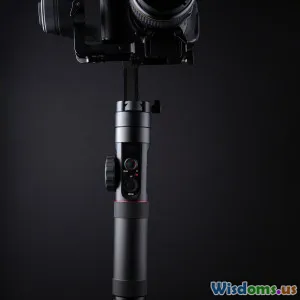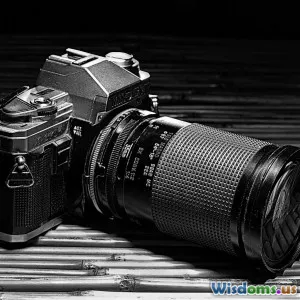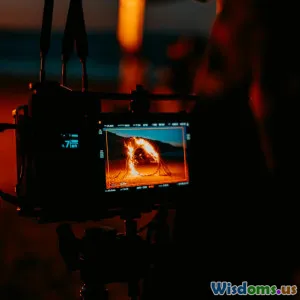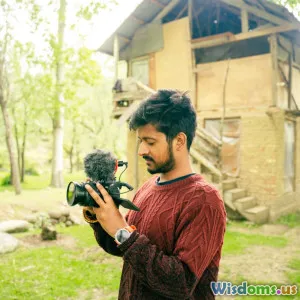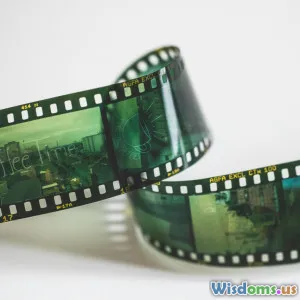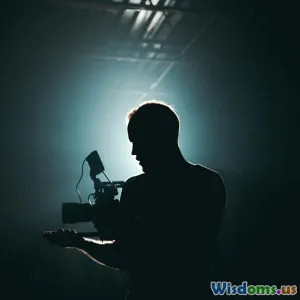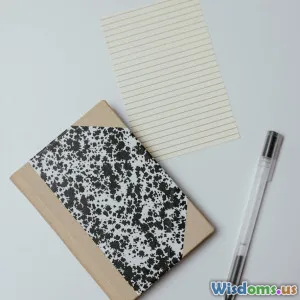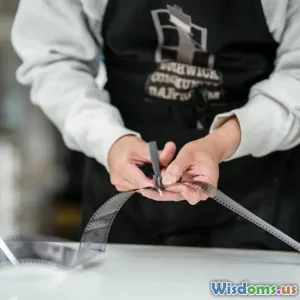
The Hidden Powers of Color Grading in Video Storytelling
7 min read Discover how color grading shapes emotions and narratives in video storytelling, unlocking filmmaking's unseen magic. (0 Reviews)
The Hidden Powers of Color Grading in Video Storytelling
Introduction
Imagine watching your favorite film, feeling completely submerged by its atmosphere, only to realize much of your emotional response comes not from dialogue or plot, but from the colors you see on screen. Color grading—the process of altering and enhancing the color in video footage—remains a transformative yet often overlooked art in filmmaking and photography. From the somber cyan hues in "Blade Runner 2049" to the warm nostalgic tones of "Moonlight," color grading works subtly but powerfully to influence how audiences perceive and emotionally connect with a story.
This article will peel back the layers of this cinematic alchemy, revealing the hidden powers of color grading and how it shapes video storytelling in ways that impact mood, narrative clarity, and audience engagement.
The Science Behind Color Grading and Human Perception
Color psychology plays a crucial role in filmmaking and visual storytelling. Colors evoke emotional and psychological responses deeply embedded in human cognition. For instance, blue tones often suggest calmness or melancholy, while reds convey passion, danger, or urgency.
Neuroscience supports these effects. Studies have shown that color impacts brain activity, influencing stress levels, attention, and even memory retention. When filmmakers manipulate color palettes during color grading, they tap into these subconscious associations, guiding audience feelings intentionally.
Example: The Coldness of "The Revenant"
Alejandro González Iñárritu’s "The Revenant" leaned heavily on desaturated, cold blue and gray tones to emphasize isolation and harsh survival conditions. This choice helped viewers viscerally experience the protagonist’s desperation far beyond dialogue or setting alone.
Color Grading as a Narrative Device
Beyond evoking emotions, color grading can narratively symbolize themes, character arcs, and temporal shifts.
Conveying Time and Place
Different color correction styles help signal different times of day or chronology. Sepia tones or golden hues may evoke nostalgia or past memories, while stark, high-contrast blue hues suggest a futuristic or dystopian setting.
For example, in the TV series "Breaking Bad," warm orange hues dominate scenes representing the intense desert environment and escalating tension, while colder colors underscore moments of emotional coldness or moral ambiguity.
Highlighting Character Emotional States
Shifts in color grading within the same film can track a character’s emotional journey. Gradual change from muted to vibrant colors can mirror internal transformation.
Peter Jackson’s The Lord of the Rings subtly uses shifting color temperatures: warmer tones in the Shire depict comfort and safety, transitioning to colder, bleaker palettes reflecting danger and despair as the quest progresses.
Technical Foundations and Artistic Choices
Color grading is a post-production craft requiring both technical skill and artistic sensibility. Modern software such as DaVinci Resolve or Adobe Premiere Pro provides filmmakers extensive control over exposure, shadows, highlights, and color wheels.
LUTs and Style Consistency
Look-Up Tables (LUTs) are presets that apply consistent color grading styles across footage, ensuring visual cohesion. Many blockbusters adopt custom LUTs to create trademark aesthetics, strengthening brand identity and storytelling coherence.
Balancing Creative Freedom and Storytelling Needs
While creative freedom allows dramatic shifts, successful grading always serves story and interpretation rather than overshadowing content. Overly saturated or inappropriate grading can distract or mislead the audience, altering intended emotions.
Case Studies: Iconic Color Grading in Cinema
1. "Schindler’s List" (1993) - Monochrome with a Splash of Color
Steven Spielberg’s choice to shoot mostly in black and white, with selective coloring of the red coat, enhances the film’s historical gravity while drawing symbolic attention to innocence amidst horror.
2. "Amélie" (2001) - Whimsical Saturation
The film’s highly saturated greens and reds create a hyper-real Paris infused with fantasy and warm nostalgia, perfectly matching the protagonist’s quirky worldview.
3. "Mad Max: Fury Road" (2015) - High Contrast and Vibrant Tones
The extreme color contrasts—fiery oranges juxtaposed against deep blues—underscore the chaotic, post-apocalyptic energy, boosting adrenaline and visual excitement.
Practical Tips for Filmmakers and Photographers
If you want to harness color grading effectively, begin by:
- Understanding the emotional tone your story requires before grading.
- Experimenting with color palettes; use reference films to identify styles that evoke desired feelings.
- Collaborating with cinematographers to plan your color story from shooting through post-production.
- Using color grading subtly—less can be more to maintain naturalism unless stylization serves a clear purpose.
Conclusion
Color grading is not merely a technical afterthought but a hidden powerhouse in video storytelling, capable of influencing audience emotions, symbolizing narrative themes, and enhancing immersion. Great filmmakers understand this, transforming raw footage into evocative art that resonates on psychological and emotional levels. As viewers and creators become more attuned to color’s language, the potential for richer visual storytelling only grows.
Whether you’re an aspiring filmmaker, videographer, or storytelling enthusiast, embracing the magic of color grading can elevate your craft—turning stories into unforgettable sensory experiences.
Unlock the secret language of colors in film; your next story deserves its full spectrum.
Rate the Post
User Reviews
Popular Posts










